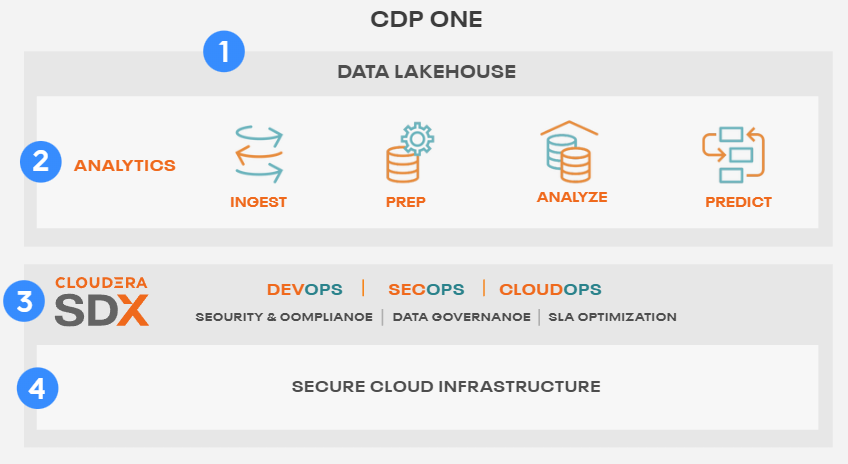Cloudera, the Hadoop-centric big data company that IPO’d in 2017 and then went private again in a $5.3 billion deal in 2021, is now putting its emphasis on becoming the unified data fabric for hybrid data platforms. Today, the company took a next stop in this direction with the launch of its Cloudera Data Platform (CDP) One data lakehouse as a service (LaaS?). This managed offering is meant to give enterprises a platform to enable self-service analytics and data access for more of their employees.
The company calls it the “first all-in-one data lakehouse SaaS offering,” though I guess being ‘first’ here depends on the definition of ‘all-in-one,’ given that the likes of Databricks, which popularized the lakehouse concept, also offer SaaS-based solutions. It makes for good marketing copy, though, and Cloudera argues that its service is the first to combine compute, storage, ML, streaming analytics and enterprise security.
“Empowering everyone in your business to get the real-time insights they need to make the right decisions requires building a truly modern data architecture in the cloud,” said Ram Venkatesh, chief technology officer at Cloudera. “Many businesses don’t have the resources, time or expertise to make this transformation happen. Cloudera’s latest cloud innovation, CDP One, joins our family of CDP cloud data services to completely alter the equation, shaving months or even years from implementation timelines and providing comprehensive data security.”
Vankatesh also argues that this solution can help enterprises move workloads to the cloud without incurring the cost of managing a complex infrastructure setup themselves. That’s kind of the point of SaaS, so no surprise there.
A year ago, Cloudera acquired two SaaS companies, Datacoral and Cazena. Cazena’s SaaS offering, especially, focused on allowing its users to easily create their own cloud data lakes and that’s likely part of the technology that is at the core of today’s launch.
For this launch, Cloudera teamed up with its ISV partner Talend to help customers make this transition. The company says the service is now “available to customers that sign up and will be widely available later this year.” And before you ask: I don’t know what the difference between being available to customers who sign up now and being widely available later this year is either.


